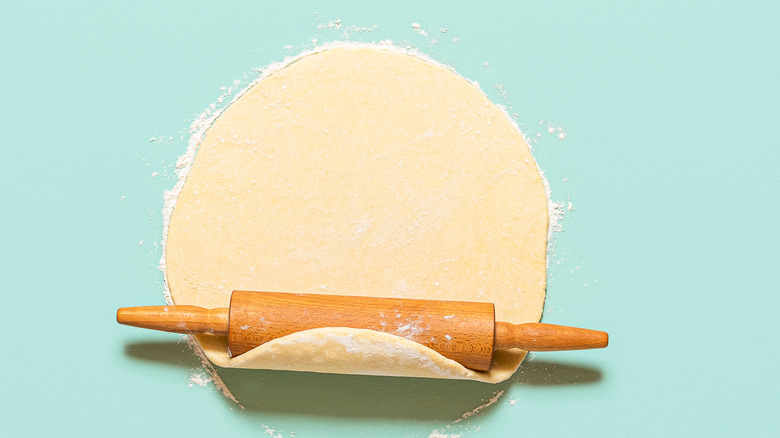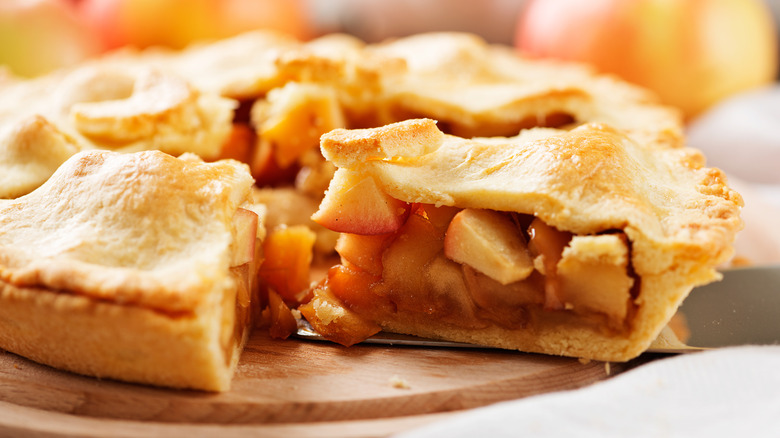Does Room Temperature Really Make A Difference For Pie Crust?
Baking is an (almost) exact science — or so we've been told. Ingredients for the best recipes are even weighed before baking, as opposed to being eyeballed, as we might do if we were cooking a savory dish. But it's not just in measuring out baking ingredients where we need to be precise. We need to be especially careful with the temperatures of the ingredients with which we make baked goods like pie crusts, as this element can make or break the final product.
Most baking sites tell us that, unless specified, ingredients are at their best when they are between 68 and 72 F, or "room temperature (via Science Notes). But room temperature is far from said range when it is a hot summer's day, and when — unless you have centralized AC — your room's actual temperature sits closer to 80 F than this ideal range. Heat is especially unkind to butter, which may be solid at 35 F, soft and pliable between 68 and 72 F, but starts to become a pool of liquid gold at 80 F (via King Arthur Baking). This means that so-called "room temperature" could and would spell the difference between a successful crust and a failed one.
Warm butter can toughen up pie crust
Because butter is heat-averse, we can conclude that pie crust dough would be too, since perfect, flaky dough is only within reach if butter is as cold as possible. Keeping butter cold ensures that the minute a pie crust hits a hot oven, the butter in the mixture can melt, create steam, and leave you with pockets of air that makes a crust light and flaky. None of this reaction would be possible if your butter has melted or turned to liquid (via Bon Appetit).
The best way to make sure that your pie crust reaches its full potential is to make sure you start out with cold butter and cold tools. If the recipe requires water, make sure that is ice-cold too, and give your dough plenty of time to cool down throughout the mixing and kneading processes.
Another thing to look out for are hidden sources of heat, particularly if you live in a hot environment. Your kitchen may be "room temperature" — aka between 68 and 72 F — in the cooler months, but we can only imagine what it is like in the summer. Your countertop will absorb the summer heat, as will the flour you use, which is why your fridge may be the best place for flour to hang out, at least when temperatures start to spike. To cool down a hot kitchen counter, Serious Eats suggests leaving a few bags of ice water on the countertop.

